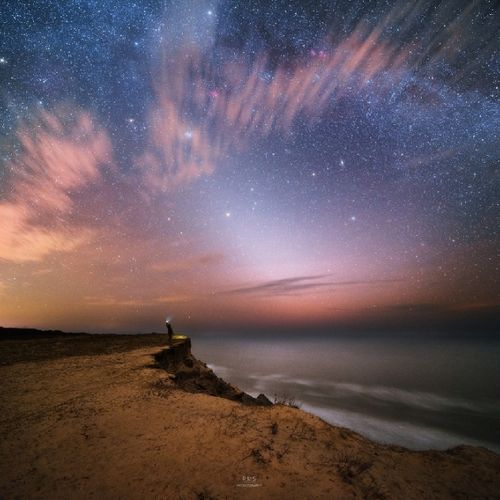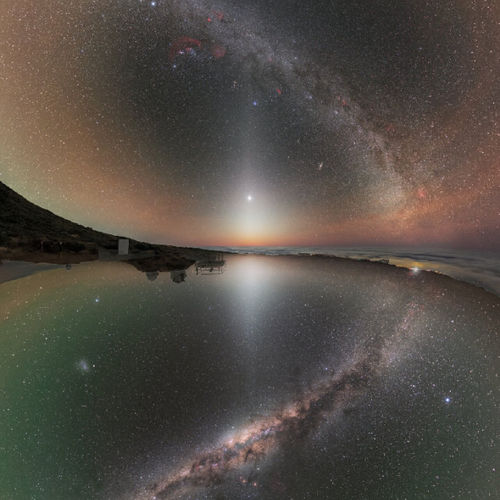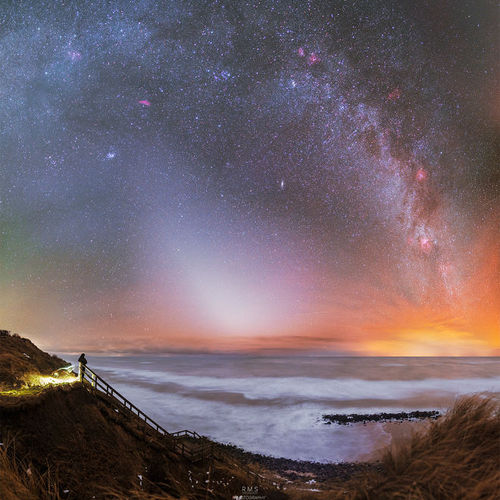
| Added | Tue, 05/03/2019 |
| Источники | |
| Дата публикации | Mon, 04/03/2019
|
| Версии |
In the evening, when the sun sets and the light of the sunset disappears, his place is another glow — the zodiacal light. They stretch upward from the Western horizon forming a pale luminous triangle visible from places with exceptionally dark skies. Ruslan Merzlyakov photographed them on February 23 Derringe (Denmark):
"Absolutely fabulous evening on the coast with perhaps the most striking of the zodiacal light which I have ever seen, and the clouds in the form of a blast!" says Merzliakov.
When you see the zodiacal light you see as the basis of our Solar system. It is sunlight reflecting off interplanetary dust. The pale glow of dust identifies the plane in which the planets move, known to astronomers as the Ecliptic plane. February, March and April are the best months to see the evening zodiacal light, because the Ecliptic plane protrudes above the horizon almost vertically.
Since the illumination is very weak, the moonlight hides it easily, so monitoring is best done during the new moon on 6 March and 5 April.
Translated by «Yandex.Translator»
Новости со схожими версиями
Log in or register to post comments





